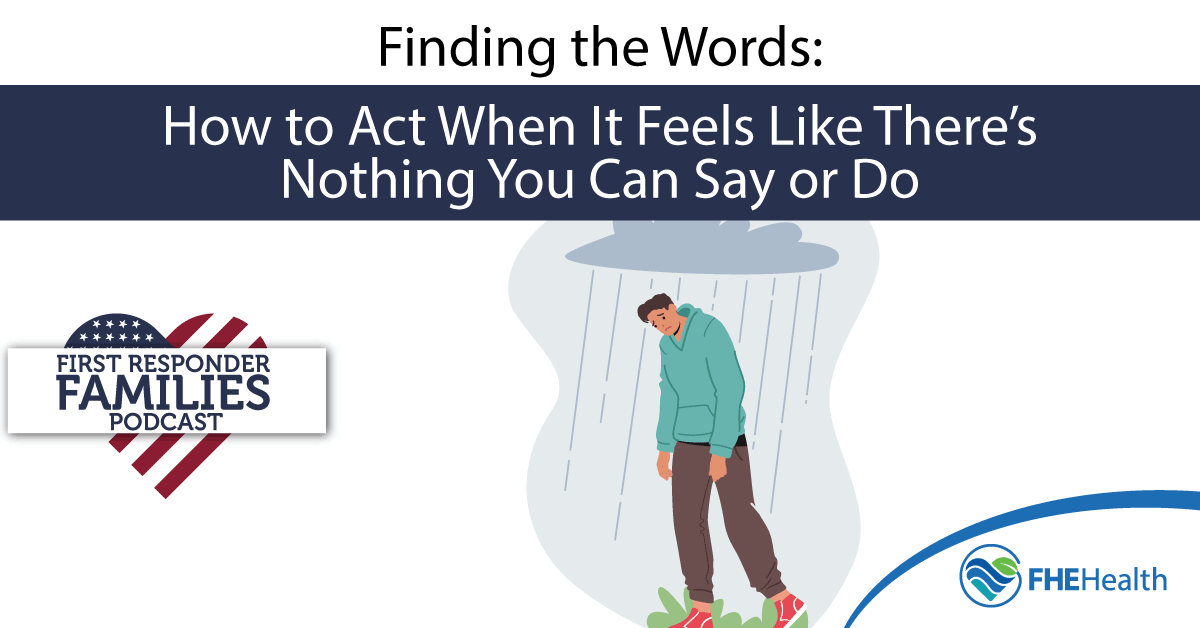
In the past, family members affected by addiction mostly heard the message that they were “powerless” over the disease: that there was nothing they could do to help, except to avoid enabling their loved one’s substance use.
In Episode 12 of the First Responder Families Podcast, show host and Director of Family Services at FHE Health, Ivona Bhahda, constructively challenged this notion, by sharing new communication tools that give families more agency in their loved one’s recovery. Bhahda’s two collaborators in the conversation were:
- Kathy Strain, a family and peer services advocate at Partnership to End Addiction. After she lost a child to overdose, she began working with families and coaching other parents affected by addiction, training them in communication.
- Joi Honer, FHE’s Director of Alumni Services. Honer has extensive clinical experience with substance use disorders (SUDs) and has been in long-term recovery for more than 40 years.
How to Communicate with a Loved One with a SUD
Bhahda began the conversation by giving voice to a common challenge when communicating with a loved one with a SUD: trust. “Letting go” — trusting — is an important part of healthy communication but often very difficult to achieve.
So, “when it comes to helping parents communicate ‘I trust you’ [to their child], even if they don’t trust … how would that look?” Bhahda asked Strain.
The subsequent conversation offered these tools, among others, for more effective communication….
A Focus on Self-Care First
Self-care and self-compassion are an important first step, Strain said. You need to have done the work of “healthy grounding,” of “putting the oxygen mask on first before you can take care of somebody else.”
Hitting the Pause Button
The next thing is to notice when you’re feeling compelled to dispense advice and information with a fix-it mentality. Here Strain suggested “hitting that pause button” to refocus before continuing the conversation.
The Information Sandwich
What’s the “information sandwich”? “It’s a technique to get your loved one to hear you more,” Strain said. It starts with asking for permission to have a conversation:
And if they say “yes,” you have that buy-in. They’re more willing to hear what you have to say, and you’re going to offer that constructive feedback in the middle. And then for that top layer of bread, you’re going to just check back for understanding or any questions they might have.
Listening and Offering Empathetic Validation
After the information sandwich, the goal is “just listening and hearing and offering … empathetic statements, validating how they’re feeling, even if you’re not feeling that same way.”
The CRAFT Model
The discussion also touched on the CRAFT model, which Honer wrote about here. The CRAFT model is another innovative communication strategy that empowers family members to speak more constructively to a loved one with a SUD.
To explore this and other communication tips further, such as how to find the right time for hard conversations, tune in here.






